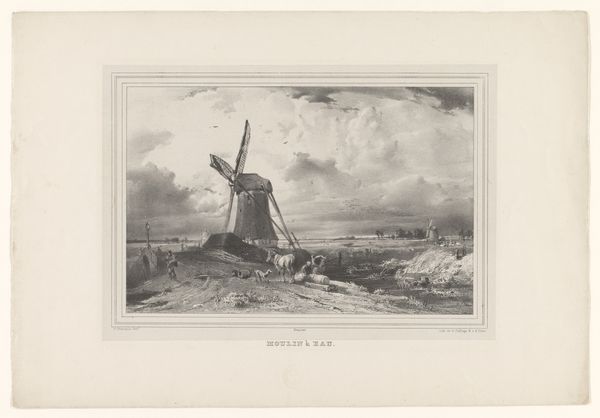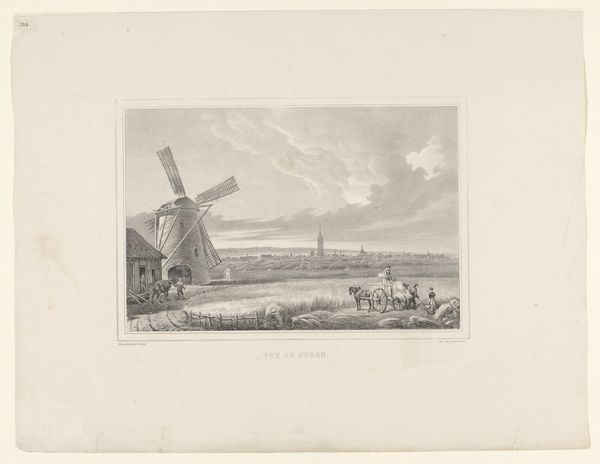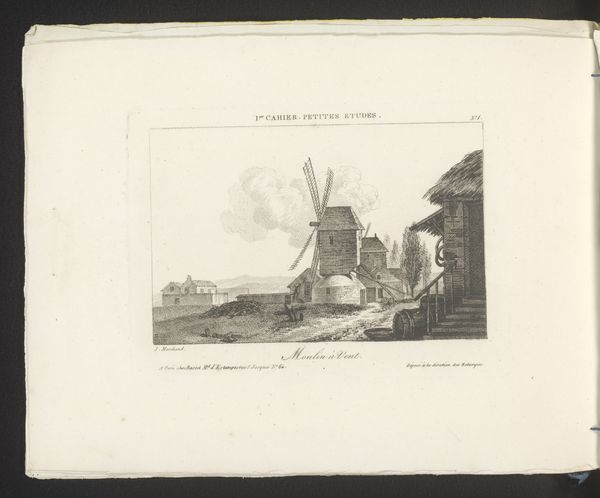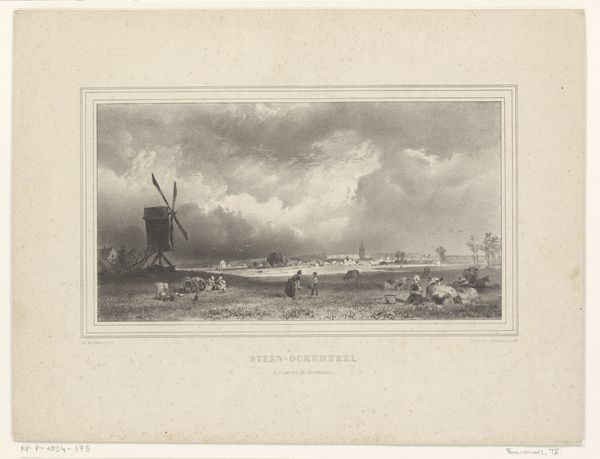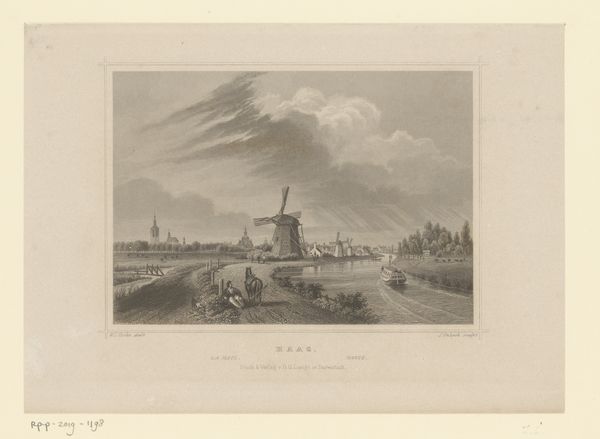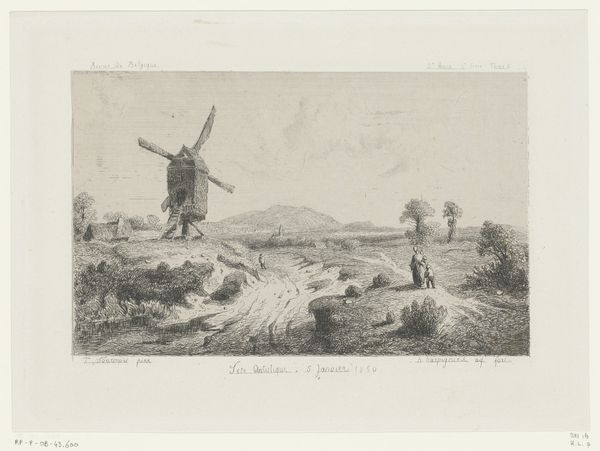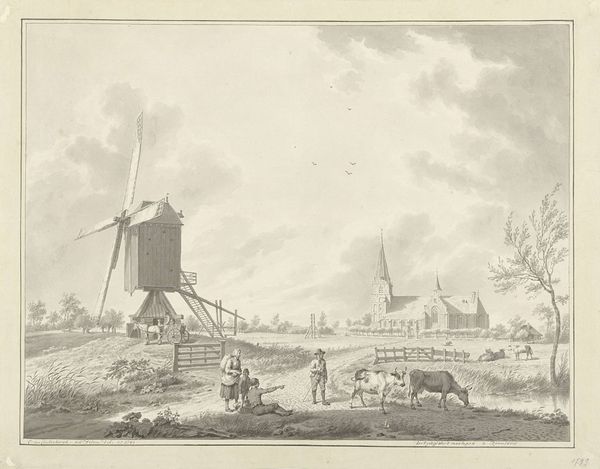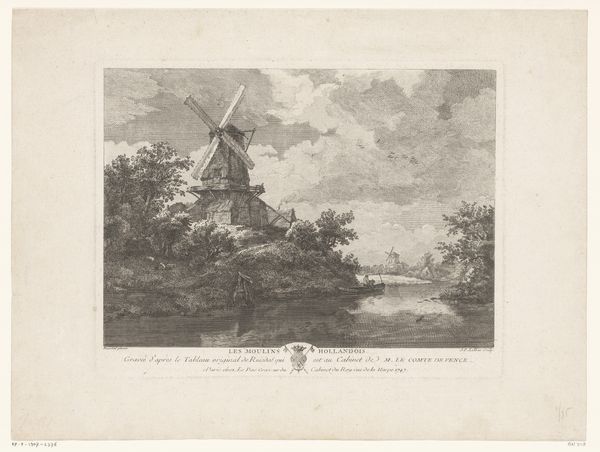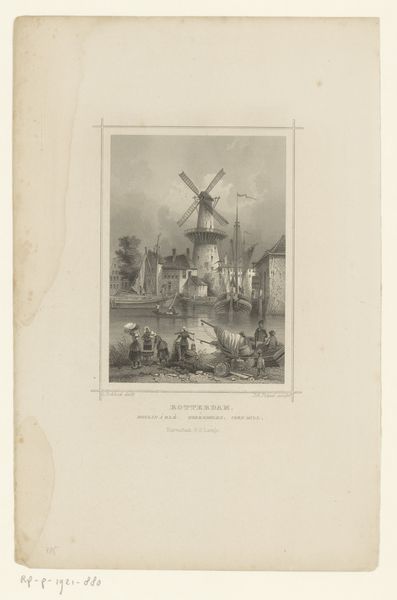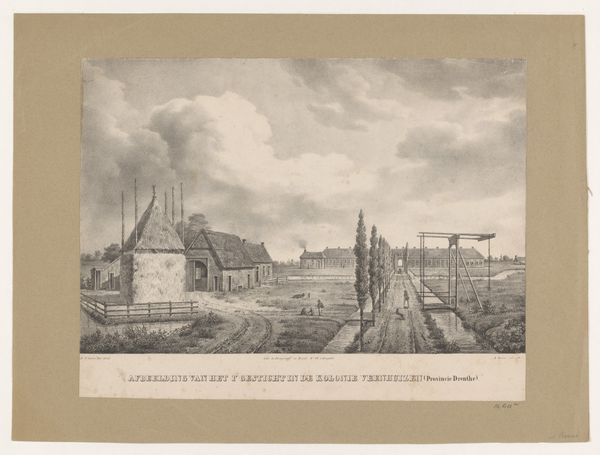
print, etching, engraving
#
dutch-golden-age
# print
#
etching
#
old engraving style
#
landscape
#
engraving
#
realism
Dimensions: height 166 mm, width 258 mm
Copyright: Rijks Museum: Open Domain
Curator: There’s a serene stillness to this scene; almost as though time itself is held in suspension. Editor: Indeed. This is "View of the Rembrandt Mill on the Rhine," an etching and engraving by Julius Umbach, likely created between 1834 and 1877. What do you see in terms of symbolic resonance? Curator: Well, the windmill is an obvious, potent symbol, isn't it? Traditionally it signifies industry and the taming of nature. Here, though, it feels softened by the surrounding landscape, as though co-existing peacefully. This could represent an idealized relationship between humans and nature, a popular trope within Romanticism. Editor: The idealized harmony you speak of makes sense considering the period of production, the late efflorescence of the Dutch Golden Age, when prints like these became potent markers of cultural identity and were also popular souvenirs of Holland’s picturesque landscapes. Consider its function in a growing tourist market. Curator: That makes perfect sense. Also consider water imagery is significant. Here, it is tranquil and reflective, further reinforcing themes of harmony. It could even represent the unconscious mind, adding depth to the scene. I would ask you what it communicates to contemporary audiences in the era of global climate change? Editor: That’s where history makes such interventions into these narratives to speak for what once was to give us hope but also a stark and frank look at reality. If it does function as this postcard it shows us that we might be romanticizing these landscapes at the expense of their exploitation. I have often felt skeptical about nostalgia! Curator: An excellent point. So we see two ways this work lives in time. One speaks about historical idealizations that may not reflect objective truths about land and labour. Yet another lens speaks of nature’s symbolic weight over time, always subject to interpretation. Editor: Yes, Umbach’s work provides not just a pretty landscape, but a multi-layered mirror reflecting back different eras and belief systems. It reveals our complex relationship with environment through the ages.
Comments
No comments
Be the first to comment and join the conversation on the ultimate creative platform.
